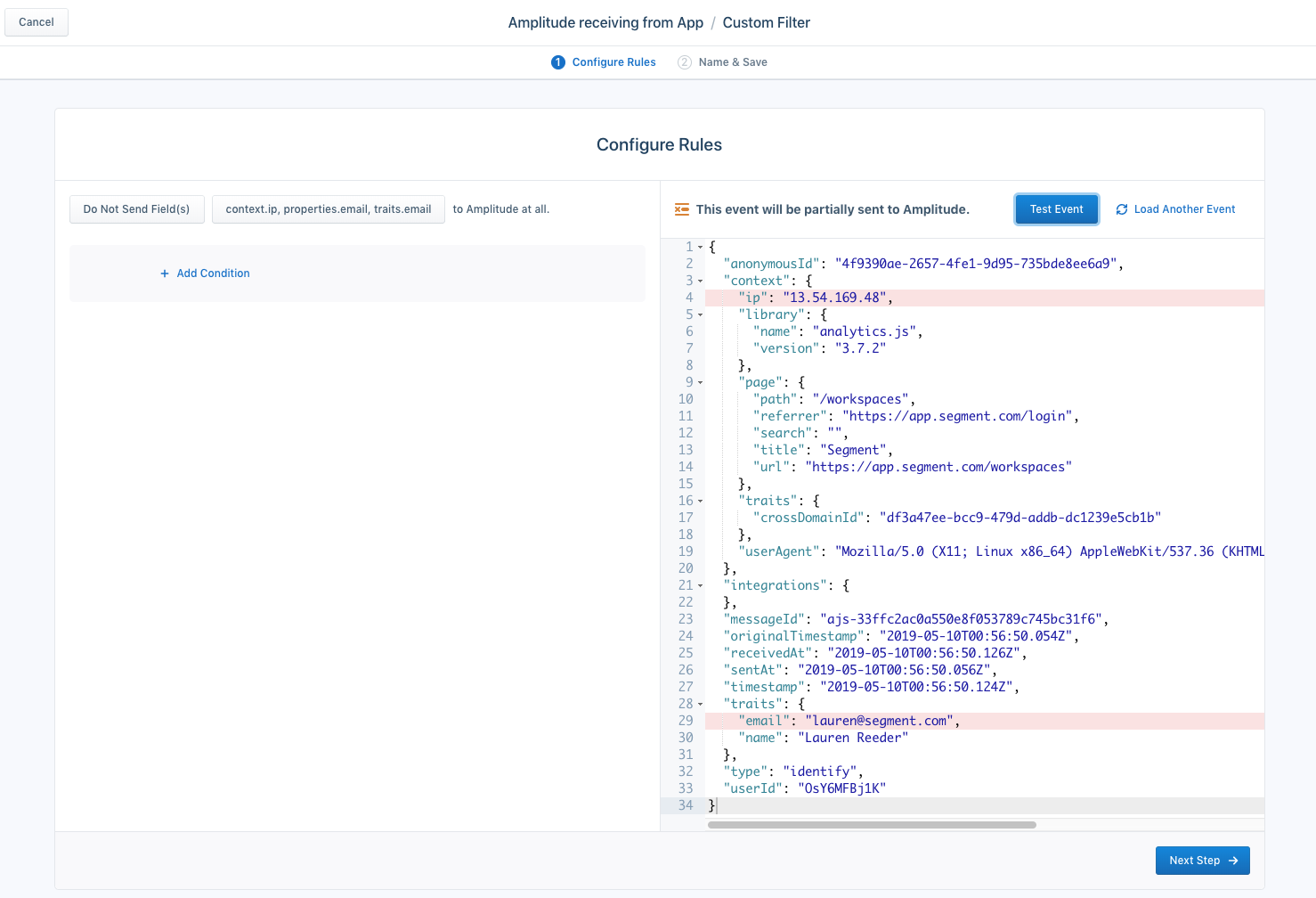From email marketing to business intelligence, every tool in your growth stack has one thing in common: they work best when they’re powered by clean, reliable customer data.
When you connect rich customer data to best-in-class tools, it opens a world of possibilities. Personalized marketing campaigns. Robust, cross-channel attribution. Structured and clean data warehouses.
However, you sometimes don’t want (or need) all of the data collected to flow into every tool in the same way. In fact, there are a few cases where filtering out data can help you save money, gain flexibility, or solve a unique business problem. Segment offers Destination Filters so customers can easily control the data flowing into each Destination. Here are a few of the most common ways customers use Destination Filters:
Get the cleanest data possible flowing into the right tools
Internal employees usually engage with your website, app, or product a lot. But keeping their actions and behaviors in the mix can muddle your analytics and crowd your marketing tools with users you don’t really want to reach.
Segment makes it easy to remove internal users and even pattern match on email or user id to drop an event (i.e. don’t send the event if email property contains ‘@segment.com’).
_Destination Filters have definitely saved us a lot of time and money at Millicom/ Tigo. In the past we struggled to send only required data or would have paid more money to send unnecessary events to new destinations, but now we only send the events we want in an easy and simple manner.
Edwin Garcia, Regional Digital Architect at Millicom_
Maximize the value you get from your tools by managing your event volume
When you have a lot of users, that also means a lot of data flowing into your tools. You can make sure you’re getting the most value from those tools by reducing the number of API calls you make to just send the relevant to each tool.
You can do this in a few ways. You can send a selected set of events from a Source to a specific tool by whitelisting those events, only sending an event if a certain field is present.
As a fast-growing business, we are adding more and more tools to our stack to help us grow. Destination Filters are a simple and powerful way for us to filter the events we forward to these tools. This doesn’t just save us time—it also saves us money on the data we send to certain tools that are priced on event volume.
Candas Demir, Digital Marketing Lead at TicketSwap
You can also sample API calls to a Destination for high volume events, either with random sampling or on a per user basis. You’ll continue to track all events for each user, but you’ll send only certain users through. This helps manage the cost and performance of large amounts of data sent to each individual Destination.
Avoid sending PII data everywhere
While sending customer emails to your email marketing tools makes sense, that may not be the case for all of your different marketing and analytics tools. The same is true for a lot of customer data, whether it’s sensitive or not.
You can accomplish this easily with Destination Filters by stripping properties from events with blacklist or whitelist property filtering.

Destination Filters help us send only the most relevant data to each Destination—without needing a ton of engineering support to make it happen. It's a really simple way to ensure that the tools in your stack only have access to the information they actually need.
Avi Flombaum, Chief Product Officer at Flatiron School
This is only a taste of what you can do with Destination Filters, which are now available to all Business Plan customers. Destination filtering builds on our existing event filtering by adding the ability to partially filter events and setup conditional logic for filters. Check it out today!
If you’re a Team Plan customer looking to upgrade so you can access Destination Filters, request a demo!

The State of Personalization 2023
Our annual look at how attitudes, preferences, and experiences with personalization have evolved over the past year.